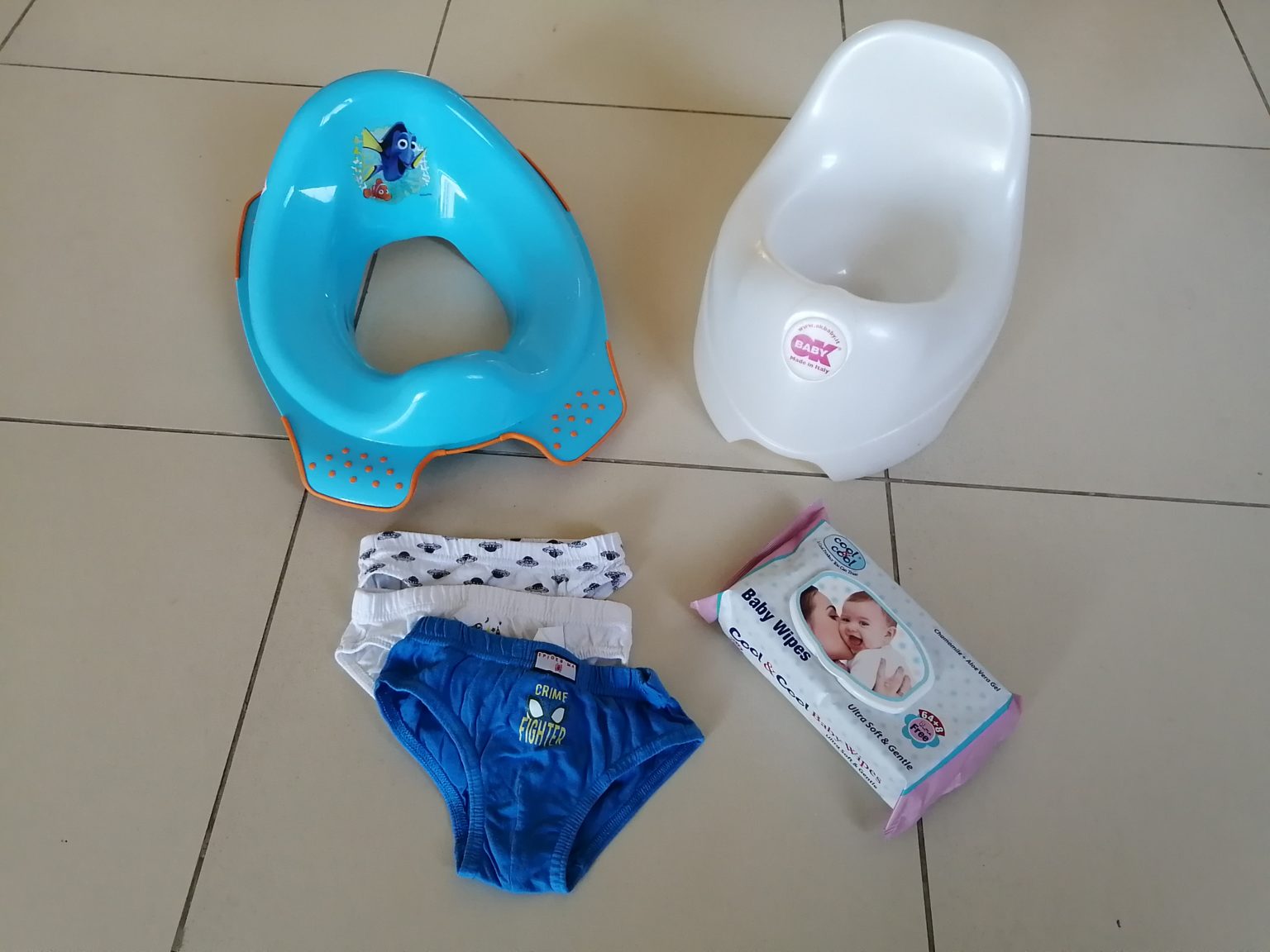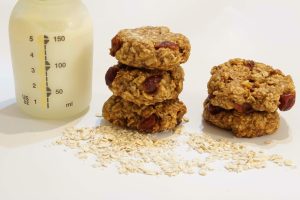تدريب الطفل على استخدام النونية: دليل الوالدَين

قد لا تكون كلمة “دليل” المصطلح المناسب لتسمية هذا المقال، بحيث يضمّ الدليل عادةً معلومات عميقة تنطوي على خبرة في المجال. أمّا أنا، فلستُ خبيرة في مجال التدريب على استخدام النونية. وسرعان ما أصبح واضحاً أنني بعيدة كل البعد عن هذا المجال عندما أنجبتُ طفلي الثاني! ولكنني أم عاملة، أكافح لتكريس كلّ وقتي لخدمة طفلَيّ وتلبية كلّ رغباتهما.
لننتقل الآن إلى موضوع التدريب على استخدام النونية. ما الذي تعلّمته؟ أولاً، لا بدّ من الإشارة إلى أنّ كلّ طفل يختلف عن الآخر، وهذا أمرٌ بديهيّ. وقد تعلّمنا في وقتٍ مبكر من الحياة ضرورة تقبّل اختلافات الآخرين، وأنا أطبّق هذا الدرس في حياتي اليومية.أحب حنيَة ابنتي و رِقِة مشاعرها وعشقها للقراءة، وأحبُّ رشاقة ابني البدنية وطاقته وقوّة إرادته، وخاصّةً طيبة قلبه. إنّهما نقيضان بكلّ ما للكلمة من معنى، وذلك ينعكس على طريقة كلّ منهما في الانتقال من الحفّاضات إلى كرسي المرحاض.
الهدوء ما قبل العاصفة
كان تدريب ابنتي على استخدام النونية سهلاً واستغرق أسبوعاً فقط. وقد انتظرنا حتّى بلغت الثالثة من عمرها للبدء بالتدريب لأنني لا أتسرّع عادةً في أي قرار، ولأنّها عندما بلغت الثانية من عمرها، تتالت الأحداث في حياتها، إذ انتقلنا إلى الخارج وأصبح لديها أخ صغير. وقعت بعض الحوادث خلال الأسبوع الأول من التدريب، ولكنّها كانت بسيطة. ووضعنا لها لوحة مكافآت أثمرت عن نتائج ممتازة وكان الانتقال سلساً جداً وبالكاد شعرنا به.
قبل السقوط … الكبرياء
نظراً لتجربتنا الأولى مع التدريب على النونية، تعاملنا مع الموضوع باستخفاف في المرة الثانية. لقد خضنا هذه التجربة من قبل وكانت سهلة نسبياً، فظننّا أنّها ستكون بالسهولة نفسها في المرّة الثانية.
ولكن، تبيّن أنها أصعب بكثير! فقد أصبحنا في الأسبوع العاشر من التدريب ووقع حتّى الآن 15000 حادثٍ. وقمنا بالصراخ والتذمّر والتنهّد وشعرنا بإحباطٍ شديد، ولكنّنا أيضًا ضحكنا كثيراً، فأحياناً، عندما تبدو تربية الأطفال صعبة، لا يكون باليد حيلة سوى الضحك.
الخطوات الخمس الأساسية
أعتقد أنّه يمكن تلخيص الأيام الأولى من التدريب على النونية في 5 خطوات:
1) انتظار حدوث جائحة عالمية تُؤدّي إلى إغلاق البلد وحجرك في المنزل
أرجأتُ التدريب على النونية مرّةً تلو أخرى، حتّى بدأت جائحة كوفيد-19 وبلغ جوي الثالثة من عمره. حينئذٍ، بدا الوقت مناسباً لبدء التدريب لأننا كنا نقضي وقتاً طويلاً في المنزل. ولم يكن يوجد داعٍ للتسرّع، إذ أردنا العمل بالوتيرة التي تُناسبه. إنّ الحياة المعاصرة متعبة للغاية، وقد أعطانا الحجر المنزلي الفرصة لنعيش حياة أهدأ ونتنفّس ونقضي أوقاتاً ممتعة مع العائلة.
2) شراء السراويل الداخلية، الكثير من السراويل الداخلية
أخبري طفلكِ بشكلٍ مستمر عن مدى روعة الملابس الداخلية، وأنّه يبدو كفتى ناضج في سروال الكبار. وانفقي ضعف ما تنفقينه على ملابسكِ الداخلية لشراء سراويل سبايدر مان/فروزن* حتّى يتحمّس لارتدائها.
(تتوفّر خيارات كثيرة أخرى لا بل هائلة*)
3) القيام برحلات عائلية منتظمة إلى المرحاض
وهنا تبدأ المتعة. من لا يرغب في استعمال المرحاض في حضور جمهور يُراقبه؟ عندما تدخلون المرحاض، قوموا بالإشارة إلى كرسي المرحاض والكرسي الخاص بالتدريب والنونية وتناوبوا على الجلوس على كرسي المرحاض.
4) الاحتفال بجنون عندما يقضي طفلكِ حاجته لأول مرة في النونية
تأكّدي فوراً من أنّكِ توصّلت إلى حلّ مشكلة التدريب على النونية وقومي بتهنئة نفسكِ على هذا العمل الرائع وأخبري كل أفراد عائلتكِ وتلذذي بشعور النصر هذا إلى حين…
5) … الإدراك أنّها كانت مجرّد ضربة حظ.
إنّ نسبة النجاحات إلى الحوادث هي تقريباً 1:15*. وتقضين 25 دقيقة على الأقل كل يوم في خلع سروال طفلكِ وتنظيف الحوادث التي يُسبّبها. وتتمنين لو لم تبدئي هذه العملية في الأساس ولكن تعلمين أنّه قد فات الأوان على التراجع!
(*بحسب تجربتي الشخصية، قد تكون نسبة نجاحكِ أفضل ولكن إذا كان حظكِ سيئاً، فقد تكون هذه النسبة أسوأ!)
العبرة من القصة
إنّ خيار التراجع دائمًا متاح. ففي بعض الأحيان، لا يكون الأطفال جاهزين بعد. نحن كنّا على يقين بأنَّ جوي جاهزٌ وأنَّ لديه مفهومًا غريبًا بعض الشيء لكيفية قضاء وقت ممتع مع والدته. وأعتقد حقّاً أنّه يستمتع بالوقت الذي نقضيه معاً في المرحاض عندما أقوم بتنظيفه ويستمتع أيضاً بمحادثاتنا القصيرة ربما على مستوى غريب بعض الشيء مثلي تماماً.
يكبر الأطفال بسرعة، وذات يوم، لن يحتاجوا إلينا بنفس الطريقة. وربما لن أكون دائماً الشخص الأول الذي سيلجأ إليه عندما يواجه مشاكل. ولكن في الوقت الحالي، أنا هذا الشخص. لذلك سأتذمّر وأتنهّد وأؤنّبه بلطفٍ، وسأضحك في وجه سخرية الحياة. ولكن سأرى أيضاً الجانب المضحك من هذه التجربة لأنّ الضحك مع أطفالنا يُساعدهم على النضوج. ومن الخطأ الشديد محاولة إضعاف شخصية جوي بأي شكل من الأشكال. هو سيعتاد بكل تأكيد على استخدام كرسي المرحاض. وحتّى ذلك الحين، لديَّ ممسحة وكميات وفيرة من المناديل المبللة ومخزون شوكولاتة سرّي لمواجهة كلّ التحديات!










